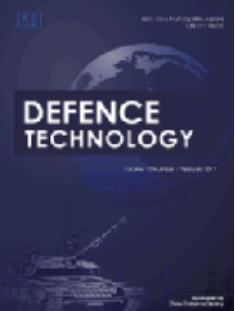Effect of post weld heat treatment on grain boundary character distribution and corrosion resistance of friction stir welded armour-grade nickel and molybdenum-free high-nitrogen austenitic stainless steel
IF 5.9
Q1 ENGINEERING, MULTIDISCIPLINARY
引用次数: 0
Abstract
This study examines the effects of friction stir welding (FSW) and post-weld heat treatment (PWHT) on the grain boundary character distribution and corrosion resistance of cross sectional (top and bottom) regions of nickel-and molybdenum-free high-nitrogen austenitic stainless steel (HNASS).FSW at 400 rpm and 30 mm/min resulted in finer grains (4.18 μm) and higher coincident site lattice (CSL) boundaries (32.3%) at the top of the stir zone (SZ) due to dynamic recrystallization (DRX). PWHT at 900 °C for 1 h led to grain coarsening (12.91μm the bottom SZ) but enhanced CSL boundaries from 24.6% to 30.2%, improving grain boundary stability. PWHT reduced the kernel average misorientation (KAM) by 14.9% in the SZ-top layer and 20.4% in the SZ-bottom layer, accompanied by a 25% decrease in hardness in the SZ-top layer and 26.7% in the SZ-bottom layer, indicating strain recovery and reduced dislocation density. Potentiodynamic polarization tests (PDP) showed a 18% increase in pitting potential and a 76% reduction in corrosion rate after PWHT. The improvement in corrosion resistance is attributed to the increase in Σ3 twin boundaries, which enhance grain boundary stability and reduce susceptibility to localized corrosion. These findings highlight the role of PWHT in refining the microstructure and strengthening corrosion resistance, making HNASS a promising material for demanding applications.
焊后热处理对搅拌摩擦焊接装甲级无镍钼高氮奥氏体不锈钢晶界特征、分布及耐蚀性的影响
本文研究了搅拌摩擦焊(FSW)和焊后热处理(PWHT)对无镍、无钼高氮奥氏体不锈钢(HNASS)横截面(顶部和底部)晶界特征、分布和耐蚀性的影响。在400 rpm和30 mm/min转速下,由于动态再结晶(DRX),搅拌区(SZ)顶部的晶粒更细(4.18 μm),重合点位晶格(CSL)边界更高(32.3%)。900℃PWHT 1 h使晶粒粗化(下SZ为12.91μm),但使CSL晶界从24.6%提高到30.2%,提高了晶界稳定性。PWHT使SZ-top层和SZ-bottom层的核平均位错(KAM)分别降低了14.9%和20.4%,SZ-top层和SZ-bottom层的硬度分别降低了25%和26.7%,表明应变恢复和位错密度降低。动电位极化测试(PDP)表明,PWHT后,点蚀电位增加18%,腐蚀速率降低76%。耐蚀性能的提高主要是由于Σ3孪晶界的增加,增强了晶界的稳定性,降低了局部腐蚀的敏感性。这些发现突出了PWHT在细化微观结构和增强耐腐蚀性方面的作用,使HNASS成为一种有前景的材料。
本文章由计算机程序翻译,如有差异,请以英文原文为准。
求助全文
约1分钟内获得全文
求助全文
来源期刊

Defence Technology(防务技术)
Mechanical Engineering, Control and Systems Engineering, Industrial and Manufacturing Engineering
CiteScore
8.70
自引率
0.00%
发文量
728
审稿时长
25 days
期刊介绍:
Defence Technology, a peer reviewed journal, is published monthly and aims to become the best international academic exchange platform for the research related to defence technology. It publishes original research papers having direct bearing on defence, with a balanced coverage on analytical, experimental, numerical simulation and applied investigations. It covers various disciplines of science, technology and engineering.
 求助内容:
求助内容: 应助结果提醒方式:
应助结果提醒方式:


